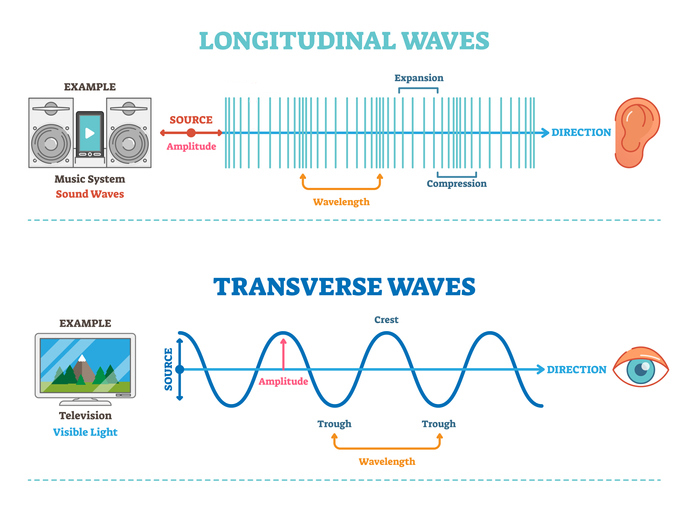🌊 Let’s dive into the ocean of waves! 🌊
Hey there, young scientist! 🚀 Ready to go on board a wave-riding journey? Let's unpack the mystery of waves and how they work. Here's what you need to know:
🎶1. Waves without the moves:
Have you ever shouted across a valley and heard an echo? That's sound waves at work! Sound vibrations and even waves that you see in the ocean are called mechanical waves. They are super cool because they carry energy from one place to another, but- here's the twist- they don't drag any matter with them. Picture this: when you hear a sound, the tiny air molecules dance back and forth but always come back to where they started once the sound is gone.
✨2. Light in space:
Now, hold onto your hats! Light can act like a wave too, and it does something even more impressive. Imagine transferring energy in total emptiness- space! That's right! Light can travel in space, where there is no air or matter at all. Mind-blown, right?
🌈 3. The Electromagnetic nature of light:
In 1865, a smart scientist named James Clerk Maxwell dropped a revelation: Light is an electromagnetic wave. This means it's a mix of electric and magnetic vibrations, both grooving at the right angle to each other. So, every ray of sunlight or flash of a mobile phone camera carries with it these electric and magnetic twirls.
📡4. All electromagnetic waves groove together:
It's not just light that dances this electromagnetic tango! Ultraviolet rays (those sneaky things that give you sunburn), infrared (which some gadgets use for remote control), radio waves (yup, like the ones from your favourite station), and even X-rays (the super rays that let doctors peek inside you) are all electromagnetic waves. And guess what? They all zoom around at a whooping speed of 299,792,458 m/s- or should I say at the speed of light! That's almost 300 million meters in a single second!
From: https://winnipegskeptics.com/tag/electromagnetic-fields/
📏5. Wave moves- The transverse twist:
Some waves like to shake things up! In the transverse waves, the particles vibrate and move at the right angles to the wave's movement direction. a shining example? Light! 🌟
🔊6. Waves on repeat:
Now, let's talk beats. Not the music kind, but close! The number of waves that crash or sound out every second is called the frequency, and we measure it in a unit hertz (Hz). Imagine it as the wave's heartbeat.
📏7. Measure the wave:
The space between one wave and the other that follows it is called wavelength. These can be as long as a few kilometres or as short as a strand of your DNA, counted in nanometres.
🌄8. Highs and lows:
Lastly, the height of the wave, from its calm centre to its peak or trough, is its amplitude. Think of it as the wave's spirit- how high or low it goes!
Now that you have surfed through the basics, are you ready to dive deeper into the magical waves of light? Keep surfing for the next wave of info! 🌊🔍📚
Your turn: 1. Watch the video and recall what you have learned so far.
2: Complete the activity
From: https://learningapps.org/view20367056





No comments:
Post a Comment